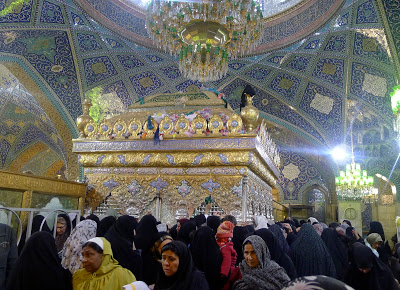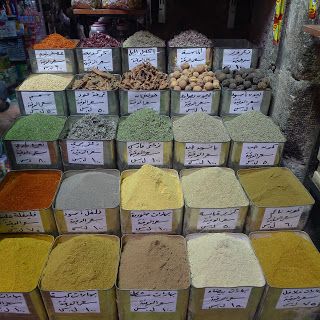
Weekend in Syria
Legend has it that upon laying his eyes on Damascus, Prophet Muhammad refused to enter the city because he wished to only enter paradise once. And, after my trip to the city this past weekend, I can see exactly what he meant.
While the Damascus city limits extend for miles and miles, the old city of Damascus is contained within ancient walls. It is a place where lattices of vines create a canopy over picturesque cobblestone streets that are lined with vendors selling colorful fabrics, barrels of sweets and spices and mouthwatering shawarma sandwiches.
It is the picture perfect image of a Middle Eastern medina.

The medina was no doubt picturesque but, even more memorable than the sights was the way the Syrian people welcomed us with open arms and smiles. I fully understand now what is meant by “Syrian hospitality.” I have heard in many places that the Syrians are some of the most hospitable people on Earth, and I don’t doubt it for a second.
We arrived in Damascus from Amman in the late afternoon and spent the evening wandering the narrow, cobbled streets of the medina. Within minutes, a group of young boys invited us into their store—not so that we could buy anything, but just for the pleasure of meeting us and telling us a bit about their country. My two friends and I crowded into the room as we introduced ourselves to the boys, while an older Syrian man took out his guitar and played some music for us.
It was not long after, that another group of young Syrians came up to us and asked where we were going. They proceeded to lead us to the popular ice cream place and bought us ice cream. When we offered to pay them back, they flatly refused.
In the US or Europe, being offered dessert by a complete stranger is nearly unheard of. In Syria, it seems to be completely normal. The fact that people were always so willing to help us and welcome us to their country while asking nothing in return, was truly heartwarming–especially considering the often-strained relationship between Syria and the West.
We ended up roaming the old city for a while with our new friends, and every so often a few more people would join our gang until we were a large mob of three Americans, a handful of Syrians and even a cop. It was all quite nice until we started feeling a bit uncomfortable about having the cop around. Not because we felt that we were constantly being followed, but because he began running his fingers through my friend, John’s hair and seeking to hold hands with him as we were walking.
After witnessing the cop’s odd behavior for a while, our new friends warned us that we should probably try to disperse to avoid the cop from following us more.
We dispersed, had a few laughs over the situation and went to bed relatively early so that we could set out for the Palmyra ruins in the morning.
Palmyra is an Oasis town three hours from Damascus, in the middle of the vast Syrian Desert. It is famous for its rose-colored roman ruins that jut out from the desert floor. The ruins are truly magical and were, hands down, the most stunning remnants of Ancient Rome that I have ever seen in my life. The magic of the ruins lies in the shades of yellows and pinks that color the columns depending on the lighting.
An ancient citadel perches on a hill overlooking the city and, at the foot of the mountain, elaborate tombs rise above the desert landscape.
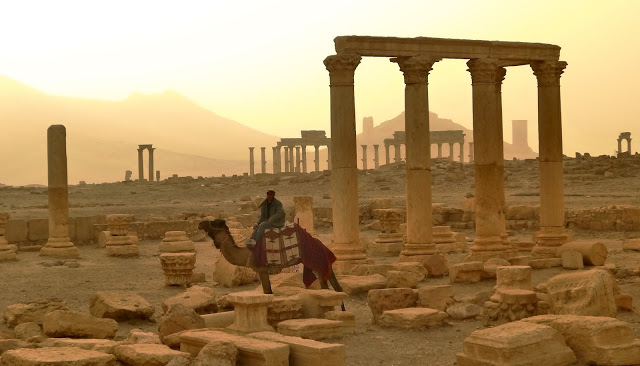
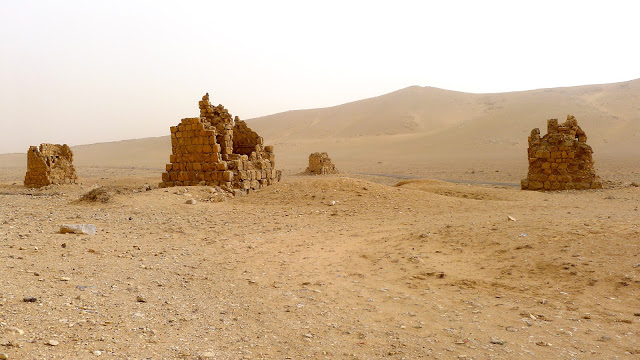
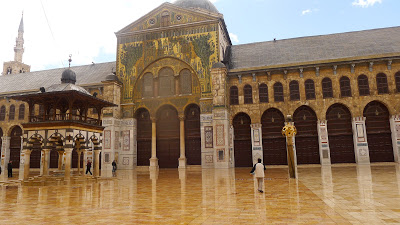
Entering the mosque was a surreal and powerful experience. At the time, I was the only non-Muslim in the building. All around me, throngs of Shiite pilgrims from Iran were clad in black robes and praying on the mosque floor. Since I was traveling with two boys, I had to separate from my male friends and use a different entrance into the mosque. I was lost in a crowd of hundreds of pilgrims and tried my best not to disturb their praying with my picture taking and clumsy walking.
A few streets down from the Umayyad Mosque, is another mosque we visited. It is one of the primary pilgrimage sites for Shiites in Damascus and famous because it houses the tomb of Ali’s daughter who died at the age of four.
I walked into the mosque, forcing my way through hoards of women veiled in the black chadors, who were praying, crying and offering dolls to the little great-granddaughter of Mohammed.
Standing amidst the pilgrims as they mourned passionately and adorned the tomb with dolls and candy, was both spiritual and deeply surreal. I don’t know if I have ever experienced something quite as powerful in my life.
